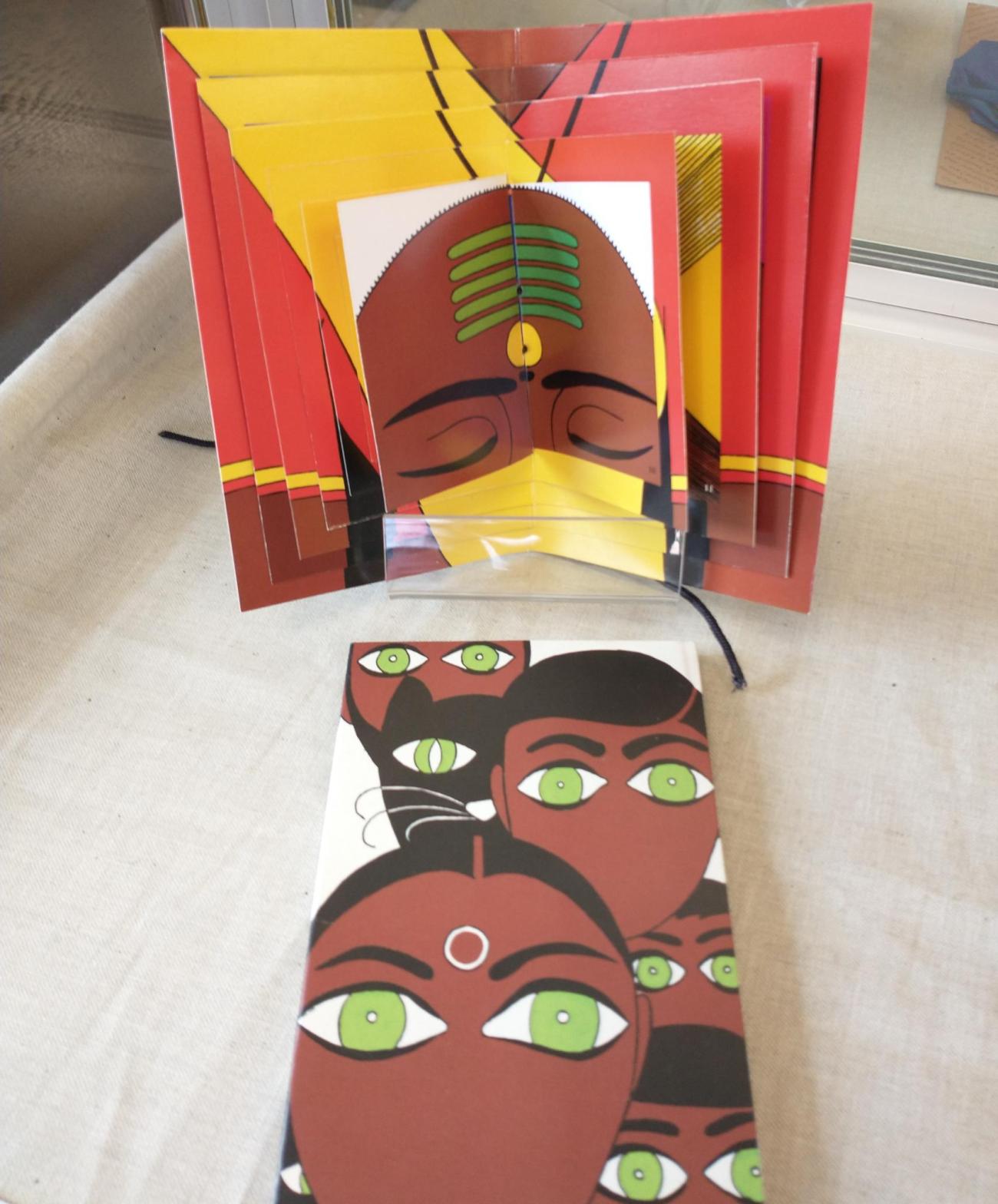
Intelligent – Unconventional – Original: Artist’s Books by Priya Pereira from the Sherman Art Library Special Collection
Born in 1967 Priya Pereira is an Indian artist and co-founder of Pixie Bks in Mumbai, India. She has been described as India’s first contemporary book artist.
Pereira studied at Maharaja Sayajirao University of Baroda and in 1993 she co-founded Pixie Bks along with Tony Pereira to publish the books.
Her work is in the Metropolitan Museum of Art, the Victoria and Albert Museum, as well as the National Museum of Women in the Arts where an exhibition of her work was held in 2016.
In 2018 Pereira presented a TEDx talk entitled "Don't go by the book", https://www.youtube.com/watch?v=qBm1BztVuHA
The But Book by Priya Pereira
Mumbai : Pixie Bks, 1995
N7433.3 P47 1995
A simple conjunction to the academician. A powerful tool to the politician. The word 'But' is an important link that is often used as a weapon and a pacifier. Or as a carrot and a stick-all in the same breath. Here the word 'But' serves to bind the book. To maneuver the book, mix and match the pre-but sentences with the post-but sentences and observe the toxic possibilities of the conjunction
Double-crossing a River by Priya Pereira
Mumbai : Pixie Bks, 2003
N7433.4 P4734 D68 2003
This Indian folktale is depicted by a silk cloth and hand lettered font that runs across the book. The reader needs to cross the river several times to get the plot of the story. Which incidentally is about sixteen not-so-wise, wise men trying to cross the river.
Legend has it that this folktale was created to convert locals into Christianity in the early 17th century. It is attributed to the Italian Jesuit missionary priest Fr Constantine Joseph Beschi (8 November 1680 – 4 February 1747) from Tamil Nadu also called Veeramamunivar which means father of Tamil prose. He was honored on his 339th birth anniversary in November 2019.
Ode to an onion by Priya Pereira
Mumbai : Pixie Bks, 1999
N7433.4 P4615 O34
Factory made paper is complemented by homemade onionskin paper. While it takes minutes to buy one at a shop, it took one hundred and twenty-one hours to painstakingly put together a 2.5”X 3.25” onionskin paper at home. Within its pages a charming ditty pays homage to the Mighty Onion.
Artist statement: This little book was made early in my life as a book artist and gave me the courage to stick it out during the years I wasn’t even aware that something called book arts existed.
Stone by Priya Pereira
Mumbai : Pixie Bks 2004
N7433.4 P4615 S76 2004
Stone was inspired by Irving Stone’s ‘The Agony and the Ecstasy’ on the life and times of Italian sculptor Michelangelo Buonarroti. The book takes a circular journey starting and ending with the same page - ‘He was in love with stone.’ While the white pages are passages from the book, the grey pages are sort of a précis of the white pages.
Artist statement: While I saw stone as a cold and callous object, Michelangelo described it as fruit and meat and as light and living. I did change my point of view.
Extract from The agony and the ecstasy by Irving Stone published by Arrow. Used by permission of The Random House Group Limited.
The evil eye by Priya Pereira
Mumbai : Pixie Bks, 1999
N7433.3 P47 1999
This is a book that richly illustrates various avatars of the evil eye and thankfully offers several cures. The book is bound using a black thread that is typically used to ward off the evil eye. Interestingly, every single page of the book is formatted such that every part of the book is protected from the evil eye.
Artist statement: The birth of my first son brought into focus the prevalence of the evil eye when every little ailment was attributed to it. So I decided to find out more and document these techniques that are soon disappearing with the next generation.
Imposition by Priya Pereira
Mumbai, India : Pixie Bks, 2008
N7433.4 P46 I66 2008
This book serves to highlight the technique of punishment also known as writing "lines" in school. It monitors the numbing process of the mind. What starts innocuously as a repetition of a line gradually degenerates into an exhaustion of the words carelessly looping and sloping, and finally exhibiting the physical and mental blurring of the intellect. Which is exactly what an imposition sets out to do.